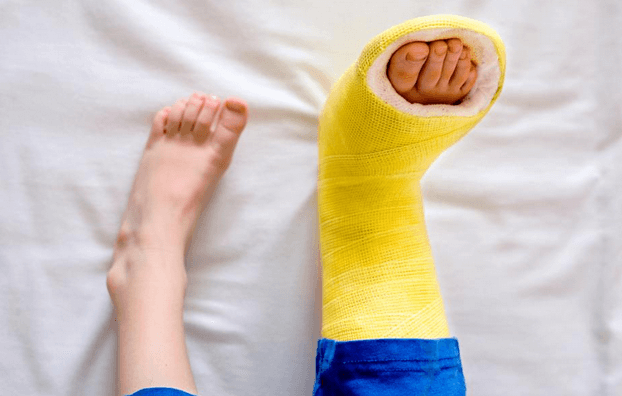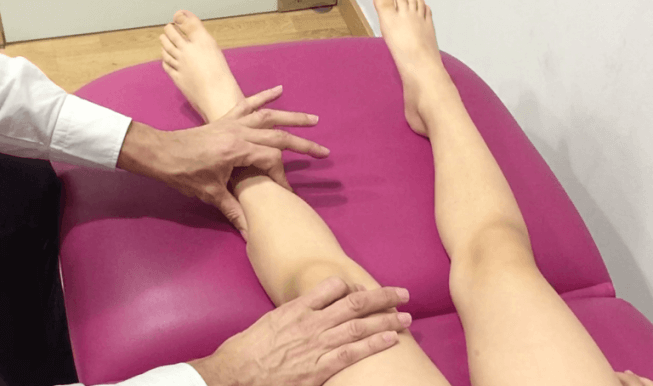Buckle fracture in children: Causes, Symptoms and Treatments
The buckle fracture is more commonly known as the Torus fracture. This is a type of injury that children can become afflicted with. Children still have softer and more flexible bones and this makes them more likely to break them compared to adults. Children’s bones are also more flexible which means that it is possible for one side of the bone to bend or curve while the other is still the same.
When one side of the bone is bent but does not pass all the way, this is called an incomplete fracture.
It is best to become familiar with the two types of incomplete fractures:
1. Buckle Fracture – This is the type of fracture in which the bone is compressed. Only one side of the bone wrinkled.
2. Greenstick Fracture – This is also known as a stress fracture. This is when the bone is pulled from its normal position instead of being compressed on one side only.
Adults who already have less elastic bones, the tendency is when the bone broken, it breaks all the way down instead of just one side getting all the pressure of the fall. There are some cases in which adults can also get fractures in an impeller. You are more prone to this type of fracture if:
- You have osteoporosis.
- Not getting enough nutrition to keep your bones and your health in general.
- Not have a good sense of balance.
Table of Contents
Possible causes of a buckle fracture
A child whose leg or broken arm has been hit by a collision or has been hit hard by a solid object. The injury is severe and a bone has been broken that has resulted in a buckle fracture, but not serious enough for all the bone to break. Some reasons for the injury are the following:
- Participate in physical activities that may involve playing more or less with your playmates
- Cycling
- Skates
- Tree climbing
Basically, everything that implies the body can be cause of a buckle fracture. It can be a problem if child abuse is the reason why the child has a broken buckle.
Signs and symptoms of a buckle fracture
A lot of incomplete fractures do not pass through the skin so you may not be aware that your child already has a buckle fracture. Children can show that they are in pain, but other than that, there are still other buckle fracture symptoms to keep in mind:
- There may be slight deformation especially when the area becomes very inflamed.
- Swelling occurs in the area where the fracture is.
- The child experiences pain every time he tries to move the affected area.
- There are bruises that can begin to appear on the skin.
If you see the signs and symptoms of a buckle fracture in your child, seek help from a doctor immediately.
Treatments for the buckle fracture
The most common buckle fracture treatment is by immobilizing the area where the injury has occurred. This will only take a couple of weeks to several months, depending on the severity of the fracture. The buckle fracture usually heals faster than the greenstick fracture.
The two most common buckle fracture treatment are the following:
There are some advantages that should be taken into account in both treatments. Molds are preferred by parents because children do not complain of experiencing pain when the affected area is in a mold. The area cannot be moved at all therefore there is no pain. A splint, on the other hand, can make it easier for the child to dress and do other normal activities because the splint can be removed.
It is best to consider the advantages of both before choosing the right treatment to help your child recover better.
Care of fracture in the home
Your child needs all the help that he or she can get, especially during the first few days after the bone has been established. Here are some tips that will make the healing process easier:
- It is important that the arm or leg where the fracture is located will be elevated.
- It is also important to put ice on the injured area every hour or every two hours for the first few days. Remember that ice should not wet the cast or splint. You can wrap the ice in plastic before wrapping it in a cloth to prevent the fabric from getting wet.
- Even if the child is saying that some parts of the mold are itchy, avoid placing creams or gels that are meant to make the itch go away as this can affect the healing of the fracture.
If in case there are some things that are not clear to you regarding how you can care for your child, you can call the doctor’s office. A doctor will be more than willing to help and give you proper suggestions on how to care for your child.
How to remove splint
If you have decided that your child should use a splint to help recover the bone, this is the process you can follow to remove the splint without hurting your child:
- Take your time in removing the splint. You are not in a hurry and sudden movements can cause problems with how the bone is established.
- Make sure your child is calm while removing the splint. He should not try to run or do anything drastic during splint removal.
- You can make your child move the wrist gently if it is the arm that has got fractured. You can also move his ankles if it is his fractured leg that has been done.
Putting the posterior splint is easy. You just have to do the same things, but in reverse order. Again, take your time in the placement of the posterior splint.
One of the main concerns of parents is whether their child would be allowed to return to school, even with a fracture. A child can go to school and certain activities can be done, provided the cast or splint is correctly placed. The school must also have qualified authorities who can check on the cast or splint when you request it.
It is recommended that you let your child stay in school a few days after the accident, but after a few days, the child can return to his or her normal routine. Most children are able to move their hands and wrists after receiving an injury. It can be more complicated if the child has a splint or plaster on his leg, but this is manageable.
Recovery Period
The cast or splint will be used for up to 3 weeks. Some are forced to carry more because they have undergone surgery and the skin also needs time to heal. For children who have fractured their leg bone, they will be required to put off the pressure of the weeks of the affected leg after the cast or splint has been removed in order to allow the leg to heal completely. Some children and adults are required to use a boot to help with injured bone taking to heal faster.
Follow-up treatment with the doctor is required to make sure the child is recovering well from the injury. The doctor will do the following:
- Perform another x-ray to make sure that the affected bones are healing well.
- Otherwise, another surgery will be established.
- During surgery, the bones will be established and a new cast or splint will be placed.
A person who has suffered a broken buckle should inform the doctor if he is experiencing a large amount of pain. In fact, the pain may be worse now than before. This is a sign that there is a problem with bone recovery.
Possible Problems
There are a lot of children whose buckle fractures heal without any problem. This type of fracture has only compressed the bone and it has not been shifted to making it easier to heal compared to other fractures. Most children grow up without problems with bone growth.
Possible problems only occur if proper treatment is not followed. Please note that children are likely to get these fractures, as they are usually full of energy and want to try new things that they have never tried before. When the child begins to have multiple fractures for no reason at all, this is the time when having fractures can become a problem.
If you suspect your child is prone to fractures compared with normal children, do not be afraid to voice your concerns with your doctor. There is a series of tests that can evaluate the bone health of your child just to make sure that everything is fine.

